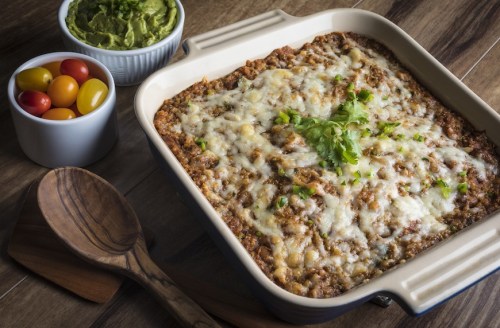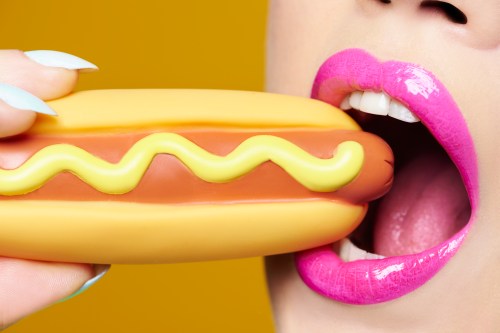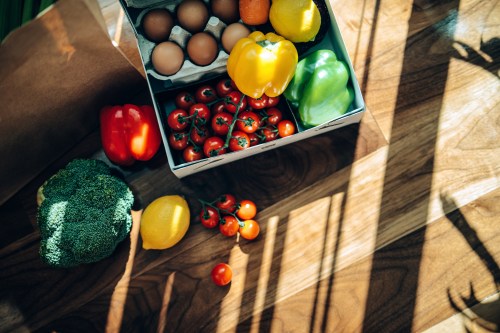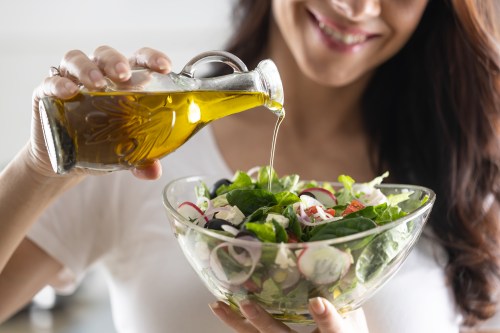Our editors independently select these products. Making a purchase through our links may earn Well+Good a commission
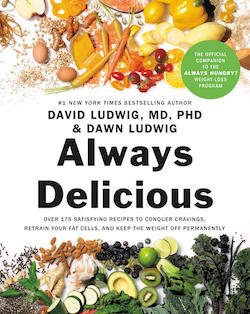
In Always Hungry, endocrinologist David Ludwig, MD, PhD argued that it’s not lack of willpower that’s at fault when we inhale the free cupcakes in the break room—it’s our biology.
“We know how the body responds to calorie deprivation. You get hungry; the kind of hungry that isn’t a fleeting feeling,” says Dr. Ludwig. “Even if you could ignore your hunger, your body has other ways of fighting back. To keep losing weight you have to keep eating less and less.” Not exactly sustainable.
To shed excess weight in a more sustainable way, Dr. Ludwig says we should focus on what really causes out-of-control munchies and weight gain: “Insulin and chronic inflammation, the twin metabolic troublemakers,” he says. To move the needle in the other direction, Dr. Ludwig’s approach calls for us to eat more fat, less carbs, and the right amount of protein.
Sound familiar? Like, um, maybe the keteogenic diet? Yes and no. Dr. Ludwig’s approached is based on some of the same principles (fat is good, sugar is bad), but it’s way less restrictive. Roughly 25 percent of your diet is carb verses less than 5 percent on the typical keto plan and you can still have non-tropical fruits, legumes, and lots of non-starchy vegetables. Think: keto light. “Most people can get most of the benefits of a high-fat, low-carb diet with a much easier approach,” he explains.
“Most people can get most of the benefits of a high-fat, low-carb diet with a much easier approach.” – David Ludwig, MD, PhD
And that’s just the two-week phase one. Phase two allows for starchy vegetables (except white potato), whole grains, and even a little sugar. By phase three you’re maintaining, mindfully experimenting with what your body can handle.
It’s a formula that’s worked for the thousands of people who follow the Always Hungry Facebook page and why Dr. Ludwig and his wife, natural foods chef Dawn Ludwig, were inspired to create Always Delicious. The cookbook includes 175 recipes that fit within the various stages of the nutritional plan.
“My number one rule is to be gentle on yourself and others and really try to take the judgment and the shame out of food,” says Dawn, who says she’s a big fan of her meatball, marinated chicken legs, and Cuban black bean soup.
She also has an ingenious twist on meal prepping: Instead of making big batches of food, she instead takes a little time to whip up some sauces, like lemon aioli, smoke paprika ketchup, basil walnut pesto, and enchilada sauce (in the recipe below), that she uses with more simply prepared proteins and veggies throughout the week. “It’s restaurant quality flavors in a home kitchen,” she says.
Keep reading to get the Ludwigs’ recipe for quinoa enchilada casserole.
Quinoa enchilada casserole
This recipe works for phases one and two of the Always Hungry nutritional plan. But it’s easy to adapt by omitting the quinoa and adding one pound of crumbled extra-firm tofu or two cups of cottage cheese.
Makes 4 servings
Ingredients
For the enchilada sauce:
1 Tbsp extra-virgin olive oil1 Tbsp chili powder, or to taste1/2 tsp dried Mexican oregano or regular oregano 1/2 tsp ground cumin1/2 tsp garlic powder1/2 tsp onion powder1 (14.5‑ounce) can diced tomatoes1/4 tsp salt, or to taste1/4 tsp ground black pepper, or to taste
For the casserole:2 cups cooked quinoa3 Tbsp chopped Anaheim or other mild chile (about 1/2 chile)2 cups cooked dried beans, or drained and rinsed canned beans, such as black beans,chickpeas, pinto beans, or a combination8 or 9 sprigs cilantro, chopped1/2 tsp ground cumin1/2 tsp chili powder1/4 tsp salt, or more as needed1/4 tsp ground black pepper, or to taste1 cup shredded cheese, such as cheddar or mozzarella1 avocado, diced, for garnish2 Roma (plum) tomatoes, diced, for garnish
For the enchilada sauce:
1. Heat the oven to 375°F.
2. Heat the olive oil in a medium pot over medium heat. Stir together the chili powder, oregano, cumin, garlic powder, and onion powder in a bowl. Add the spices to the hot oil all at once. Cook, stirring, for a few seconds to allow the spices to become fragrant and infuse the oil with flavor without burning.
3. Add the tomatoes, salt, and pepper. Bring to a boil. Reduce the heat to low, cover, and simmer for ten minutes.
4. Puree directly in the pot with an immersion blender. If the sauce is not deep enough to fully immerse the blender and prevent splattering, carefully transfer the sauce to a deep bowl or jar to blend. Return to the pan after blending.
5. Simmer for five minutes more to slightly reduce the sauce. Taste and adjust the seasonings. Set aside. (This sauce can be made ahead and stored in an airtight container in the refrigerator for up to two weeks and reheated for quicker prep.)
For the casserole:
1. In a 9‑inch square casserole dish, combine the quinoa, enchilada sauce, chile, beans, cilantro, cumin, chili powder, salt, pepper, and three-fourths cup of the cheese. Adjust the seasonings. Sprinkle the remaining one-fourth cup cheese evenly over the top.
2. Bake until bubbling and the cheese has melted, about 15 minutes. Serve immediately, garnished with the avocado and fresh tomato.
Excerpted from Always Delicious by David S. Ludwig, MD, PhD, and Dawn Ludwig. Copyright © 2018 by David S. Ludwig, MD, PhD, and Dawn Ludwig. Reprinted with permission of Grand Central Life & Style. All rights reserved.
This wintery Caesar salad makes a perfect side dish for your meal and cap things off with these rich and chocolatey keto brownies.
Sign Up for Our Daily Newsletter
Get all the latest in wellness, trends, food, fitness, beauty, and more delivered right to your inbox.
Got it, you've been added to our email list.
